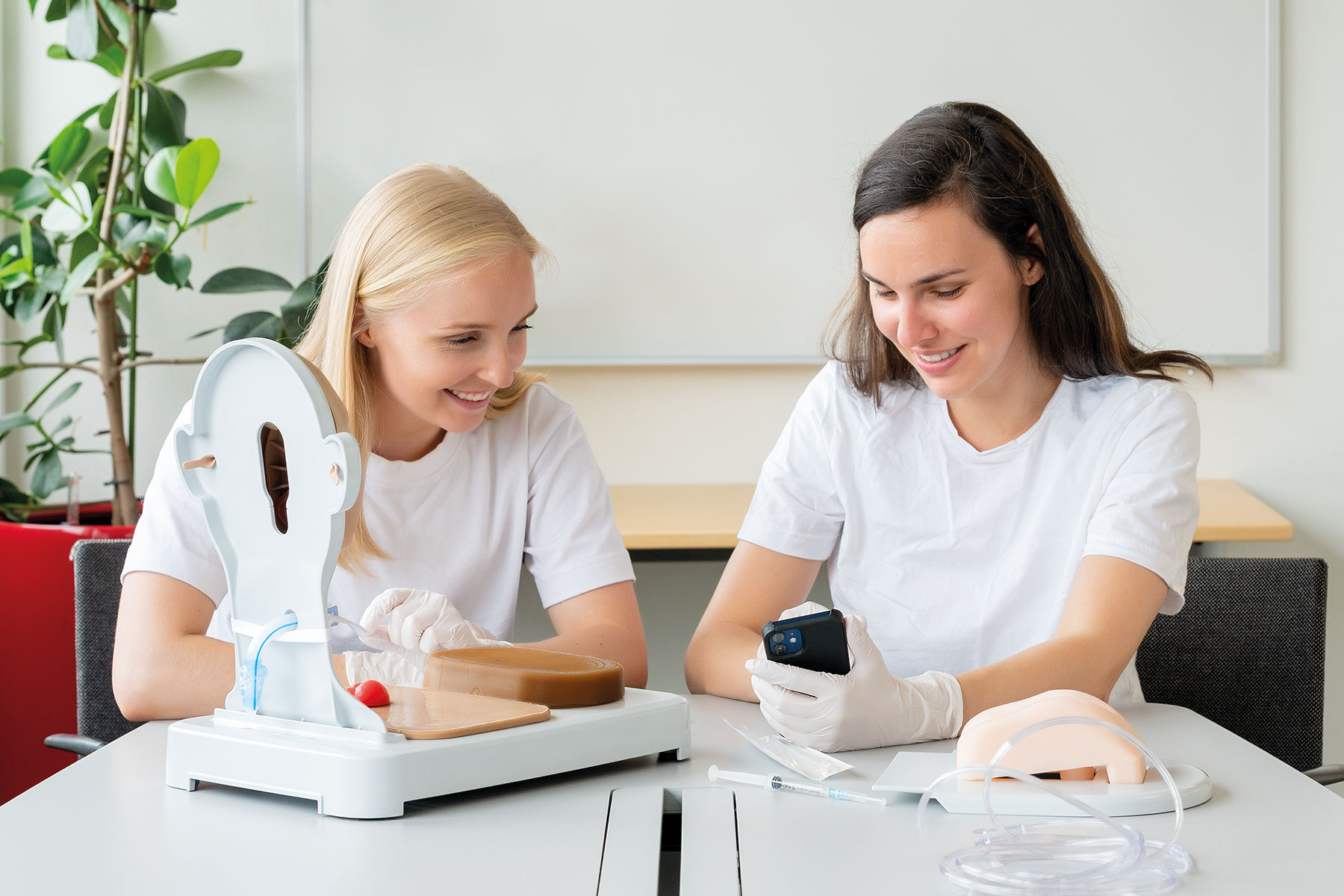How can simulation help with competency-based nursing education?
3:55
Experts weigh in on the importance of simulation in competency-based education in nursing and offer advice for programs.

Michelle C. Moulton, DNP, RN, CHSE, CNE, RYT-200
Director of Center for Clinical Excellence
University of Maryland St. Joseph Medical Center
Michelle: Competency-based education, I think, starts with a very clear picture of what the graduate nurse looks like that can be handed off into practice. And I think first, that conversation between academia and practice to determine what that graduate looks like is one of the first most important steps. And I think that’s happening. We have the AACN Essentials and we have some first steps in nursing education to move in that direction. Once we have that clear picture, educators can set up the curriculum, the teaching strategies to move a learner toward that ready picture of a new graduate.
Simulation, I think, provides the opportunity for learners to do that clinical reasoning – that thinking as a nurse, apply their knowledge, and do it in the context of the practice setting in which they provide patient care. So they do it with the alarms, interruptions, complex patient care. We don’t do thinking and decision-making in isolation of all of those environmental factors. So that all has to be put together. Simulation is one experiential teaching strategy that does a really good job of putting all of those pieces together to allow the learner to practice that thinking on their feet with feedback, with debriefing, in an environment in which they have psychological safety provided by hopefully the facilitator, an opportunity for them to learn and practice and rehearse and grow.
So if you have simulations across your curriculum, multiple opportunities for this type of experiential practice, then learners can see better where their skills are, how they’re progressing against the milestones that are set by competency-based education, and that they can see for themselves and have more autonomy in their nursing development and in their educational experience about how they’re progressing towards readiness.

Jocelyn Ludlow, PhD, RN, CHSE, CNE, CMSRN
HS Associate Clinical Professor and Simulation Director
University of California, Irvine – School of Nursing
Jocelyn: I think simulation is a really good tool to allow us to give our learners an opportunity to demonstrate a comprehensive understanding of the skills they’ve learned, the knowledge they’ve acquired, their experiences in the classroom, their experiences in clinicals. So as we move forward into the sort of new era of nursing education, simulation is going to be a very significant part of how students are able to demonstrate that they’re meeting their competencies through their actions.

Susan Hébert, PhD, RN, CHSE
Assistant Dean of Simulation
The University of Tennessee, Knoxville – College of Nursing
Susan: Simulation will help to create the clinical situations that we need to observe. You can’t always observe the students in all these situations in a clinical environment because you can’t standardize it there. We can send students to a clinical unit, but we don’t know how many patients are going to be there that day, what kinds of patients are going to be there that day … so you can’t build these situations that are standardized to be able to observe. Simulation is a way to ensure that you can build opportunities to evaluate competence in an observable environment.

Kelly L. Rossler, PhD, RN, CHSE, CNE
Associate Professor
Baylor University – School of Nursing
Kelly: I think simulation needs to be at the forefront … of looking at the totality of [the] picture. It needs to continue to be a part of the discussion. And in that discovery of, how do we continue to define, in this day and time, what competency-based education is? When I reflect on my novice practice as a nurse or in practice today, when we look at transition into practice settings, we do have those checklists … that we use at that moment in time, which could be the perfect moment in the environment that I’m deemed competent. [But] what about other factors? What about your environment? Simulation will provide us opportunities to explore those avenues [and] really expand the research on this concept and help define the concept of competency-based education.

Jocelyn: I would recommend schools that are beginning to transition to a competency-based education program, to take a minute to step back and look at their curriculum, map it to the competencies that they’re aiming to achieve, and then go back and look at their simulation program and also map that to the competencies. What we’re doing at UCI right now is we’re looking at all of our simulations we’ve been doing and trying to identify what competency they are meeting. And we’re documenting that in a new version of our simulation template, which includes a section of that so that it’s very easy to find, it’s very easy to identify. And then every new simulation that comes to me, when a faculty wants to develop something, I ask them, “What competencies are you trying to meet?” Let’s make sure that there’s a clear connection so that we have meaning in why we do these activities and our students and our learners can demonstrate their competencies in their nursing practice.

Susan: Find the champions within your program to assist you. It’s not going to be easy, but I think the best advice is that, whoever is the person that is the lead or spearheading the initiative, find the champions that will help you bring others on board. … Find the people that will help you bring this along, rather than taking it all on as a one-person job.

Michelle: First, I would recommend understanding a little history about competency-based education – starting with its early beginnings in education and then specifically how and why CBE has made its way into healthcare education. Basic forms of competency-based education have been present in healthcare education for a long time! Think back to the annual “competency” fairs that are still held in the hospital and other care environments – a series of stations where nurses demonstrate a variety of skills required to provide patient care safely. This “competency event” provides the checkpoint and opportunity to establish a level of confidence and trust that the professionals [who are] providing care to our communities can do so with the consistency, accuracy, and level of autonomy outlined in their scope of practice – that patients expect and deserve.
Now, let’s think about what this model of establishing trust and confidence in developing nursing practice looks like on the academic side of a nurse’s training: in the classroom, sim lab, clinical environments. A shift to CBE inspires nurse educators to design curricula that build a pathway to practice readiness that includes milestones that clearly mark the development of and scaffolding of the required knowledge, skills and abilities (KSAs) required to provide a level of nursing practice that begins to meet the complex needs of practice partners and patient care. Establishing a competency-based model of education promotes a clear handshake between academic and practice partners and shifts the academic-practice transition from being a “gap” to overcome to becoming a “step” in professional growth and development. Understanding the “why” behind CBE provided me with an almost immediate clarity and inspiration needed to engage in the “how” to implement CBE in nursing programs.
